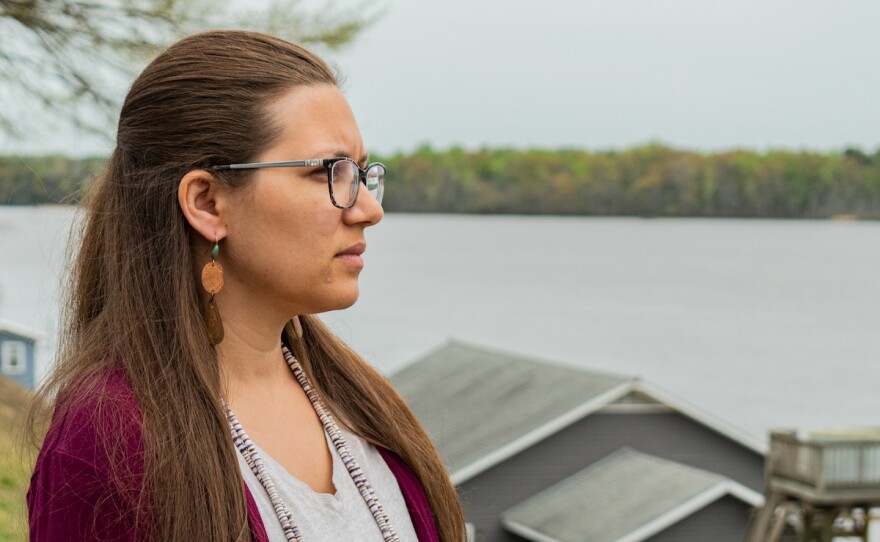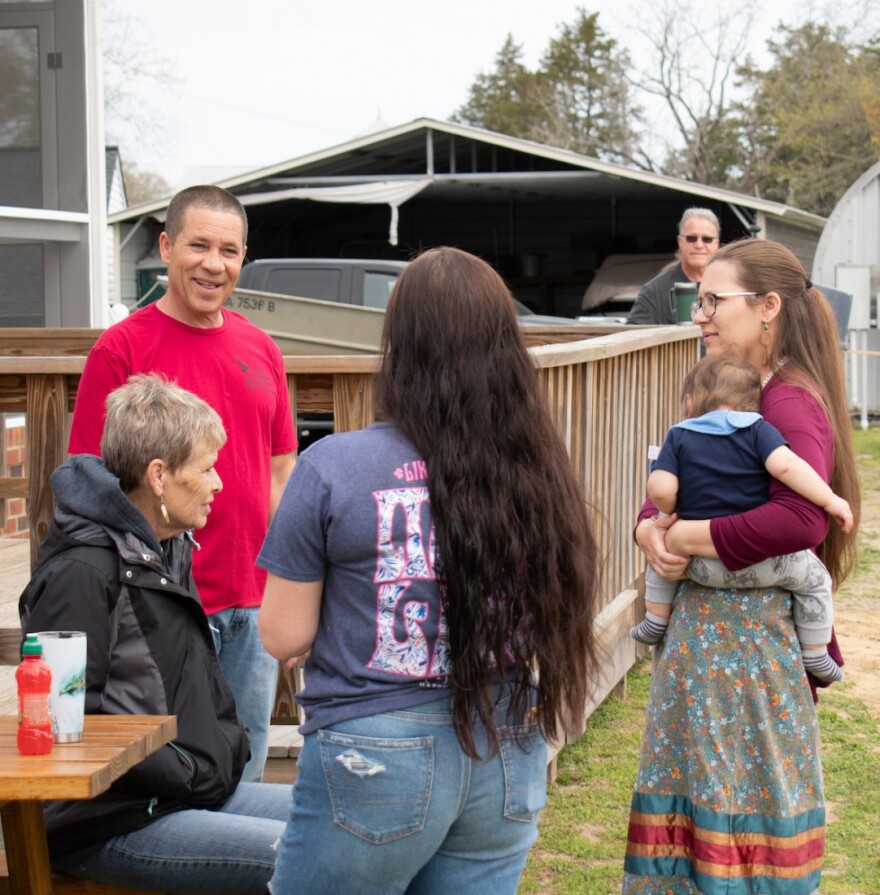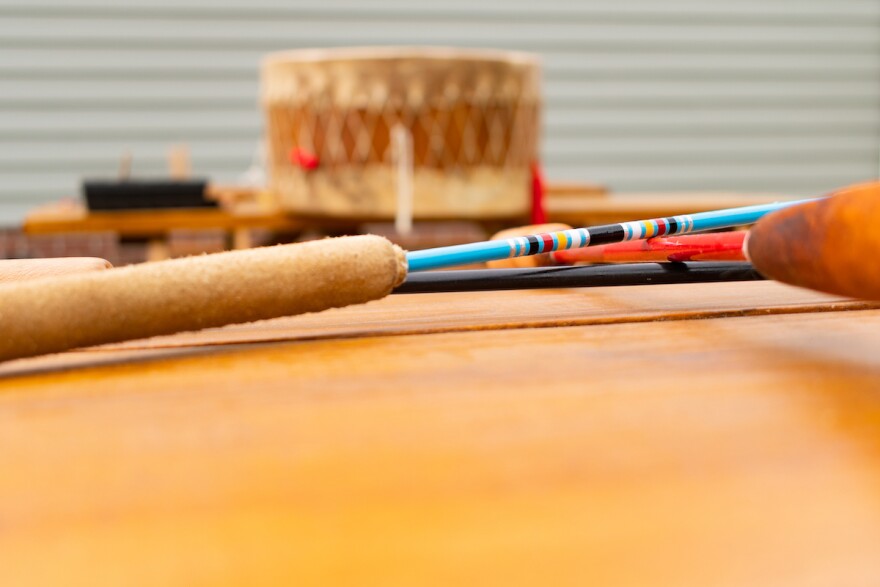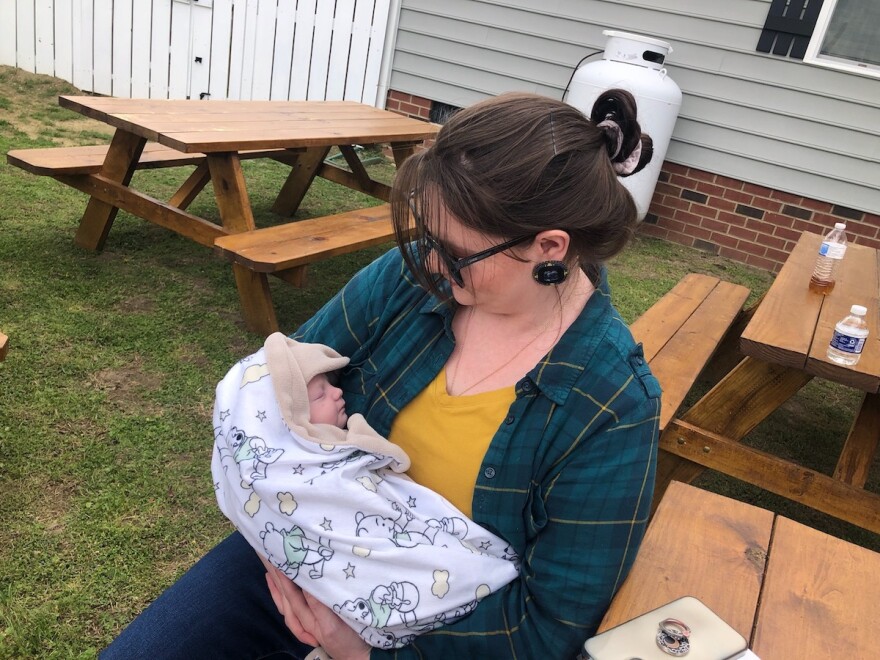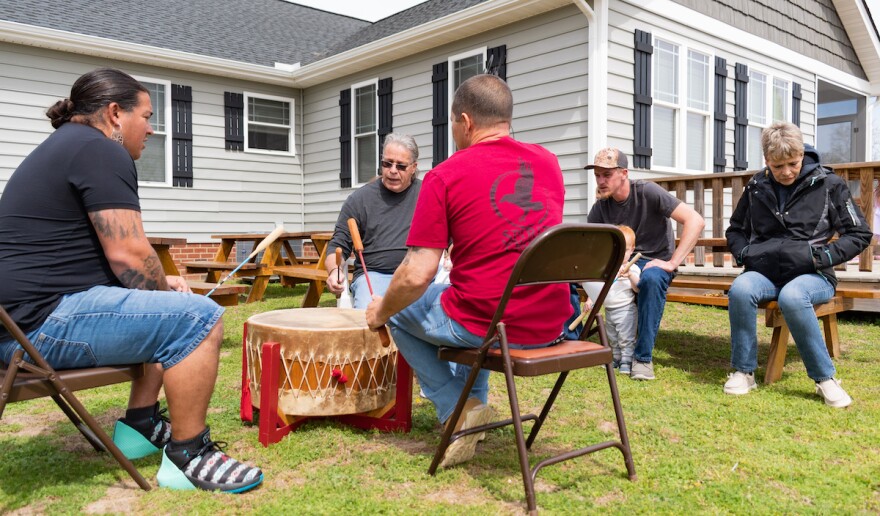Eastern Woodlands Revitalization is a nonprofit organization that Raven Brightwater Custalow started with her family, to pass down ancestral knowledge and the culture of the Mattaponi and other regional tribes. She and her sister, Nokomis Whitefeather Custalow, saw a need in their community from an early age.
“My sister and I always talked about how we really wanted to be able to focus on Eastern Woodland culture,” Custalow said. “A lot of people think Native American people are all the same, and we're really not. It varies from tribe to tribe, so we wanted to really bring the uniqueness of Eastern peoples to the forefront.”
Some unique aspects of Eastern Woodland culture are already lost to time. When classes started, Raven noticed attendees' interest in creating feather mantles, shoulder adornments that had not been worn in about 100 years. The interest sparked around the same time she began wearing her own mantle with her regalia at powwows.
“People started seeing that and wanted to learn how to do it,” Raven said. “I don't have the knowledge of the exact technique that maybe my people used, but I was able to research and create my own way of doing it … . That's who we are as Indigenous people. Things evolve over time. We learn new ways.”
Revitalization means saving ancestral knowledge from being lost with room for re-creation and invention of Eastern Indigenous culture.
“With [Eastern Woodlands people] being one of the first-contact Indigenous people, we lost a lot,” Raven said. “We lost our language. We lost a lot of cultural practices, our spiritual practices, and we wanted to be able to help bring that back.”
Mattaponi matriarch’s ‘spirit beads’
Raven and Nokomis are granddaughters of Christine Rippling Water Custalow, matriarch of the Mattaponi, who resides on the reservation in King William County. She taught her children and grandchildren traditions from Elders.
After settling with her family on the reservation, she taught cultural classes to about 30 children. Along with her Mattaponi roots, Christine is a descendant of the Rappahannock and worked with children from tribes across Eastern Virginia.
“I was teaching them clay, beadwork, regalia-making, dance, everything,” Christine said. “Some from Pamunkey, some from Upper Mattaponi and some from Rappahannock — just teenagers, young kids.”
“When I started doing good over there without them, the lady that was helping them out came to me and wanted to know if I would help some of their students,” Christine remembered. “I said, ‘No … if they wanna come over and see what I’m doing, they’re welcome to. I couldn’t afford it, but I did it.”
She would teach on Saturdays, sometimes in between shifts for her in-home healthcare job.
“Sometimes, I'd have to go to work, fix breakfast, then come home by 9 to open my classes, teach until 2, get in my car and go back to work,” she said. “But those children loved it. Now, Raven and them are teaching their children.”

Raven fondly remembers beading with her grandmother, carefully following her patterns. After setting beads on the loom for one of her first projects, Raven realized a mistake: An orange bead went in the place of a red one. Frustrated with “messing up,” she showed her grandmother.
“She was like, ‘No, that's not messing up,’” Raven recalled. “She called them spirit beads; it was meant to happen.”
Reclaiming and revitalizing
Raven said she’s grateful for the sacrifices her ancestors made, but sees some people associating assimilation culture with ancestral culture.
“If we go back to precontact, that wasn't who we were, and not to put any shame or disrespect on my grandparents, my great-grandparents, they had to do what they had to do,” she said. “But I think we're living in a new time, and I just want people to know that while it might be new to us now, it's not new.”
Most recently, Gregory Smithers, professor of history at Virginia Commonwealth University, has centered his research on sovereignty, sexuality and culture in Native American history. His most recent book is “Reclaiming Two-Spirits: Sexuality, Spiritual Renewal & Sovereignty in Native America.”
“Native people have to be really creative about the way they reclaim their culture,” Smithers said. “Sometimes, that means going well beyond tribal boundaries to other tribal communities with similar language traditions as their own.”
In the early 20th century, the dominant culture for Indigenous tribes across the country was assimilation. Children, including Christine and her siblings, were denied education or sent to out-of-state boarding schools. Separated from their families and their way of life, the American government tried to flush out Indigenous culture.
“There's a number of ways of how communities can keep their knowledge to themselves and recognize that they have to,” Smithers said. “By the time we get to the 18th, 19th, 20th centuries, the policies of the British, and then Americans, towards native people is to either eradicate Indigenous language and culture or to criminalize it in a way that makes it difficult to hold onto that language and culture. Protecting that very important, very fragile information — so that it can be renewed in the future — was paramount for many people through that period.”
The white supremacist legacy of Walter Plecker systematically oppressed Black and Indigenous people. Overseeing Virginia’s Bureau of Vital Statistics for more than three decades, he advocated for erasing Indigenous identity from record, even forcing midwives to alter birth certificates.
“Between 1912 and 1946, Walter Plecker oversaw and put in place a system that amounted to the ‘paper genocide’ of the state’s Native Americans,” Smithers wrote in 2015. “With the passage of Virginia’s Racial Integrity Act in 1924, the legal infrastructure for defining indigenous people as black — and out of existence as Native Americans — was fully in place.”
Teaching the next generation
As a nurse practitioner and president of the Eastern Woodlands Revitalization, Raven’s path is similar to Christine’s, nurturing physical and cultural wellbeing in their community.
“If you're an Indigenous person, and you come with a good heart, and you just want to learn, then we welcome you, and it's not just us sitting there teaching,” Raven said. “It's really knowledge sharing.”
Classes used to be once a month on the Mattaponi Reservation. Currently, there is internal conflict with state-recognized Mattaponi tribal leadership. Descending from both Custalow lines (not everyone mentioned in the story is directly related unless specified), Christine’s children are known as the culture keepers. One allegation against the council is the denial of access to Christine’s pottery kiln, which has been left unused in the community building.
In early 2020, the sisters, along with Raven’s husband, Christopher Lee Custalow, prepared to expand their teaching with trips to Virginia universities, but COVID-induced lockdowns forced the group into hibernation. Prior to the pandemic, though, they traveled for classes with the Pamunkey, Chickahominy and Nansemond tribes.
“Our community has grown, and it's a beautiful thing to see all these people, not just Mattaponi, but we have Pamunkey, Upper Mattaponi, Rappahannock, Nansemond,” Raven said. “We have Patawomeck that have come, and tribes even outside of Virginia … . So, it's been a really beautiful thing.”
Smaller classes have started up again, and Raven’s father, Lonnie Wise Spirit Custalow, hosts drum practice at his home. The group also attended local powwows this year, including its first Monacan Indian Nation Powwow earlier this month.
“I built this place, so that Native people from all tribes, as well as the Mattaponi, will have a place to come together, learn and practice our culture,” Lonnie said.
“Indigenous people are sovereign and as a result, hold the rights to self-govern and self-determination as we see fit,” he continued. “The Eastern Woodlands tribes have inhabited this region for thousands of years before Virginia was a colony and prior to the formation of the United States. We do not seek or need validation from anyone else to practice our way of life.”


